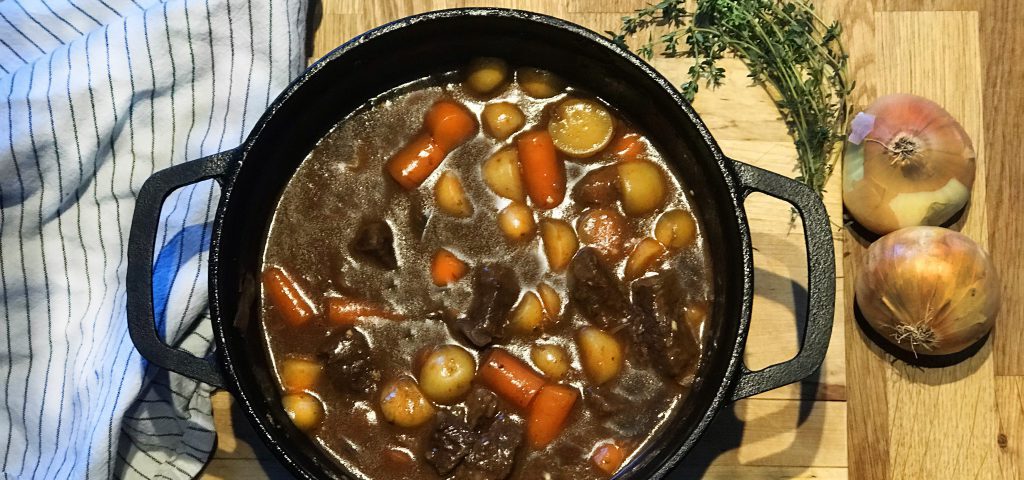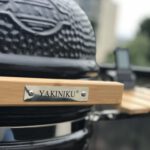
Review van de Yakiniku kamado
oktober 12, 2020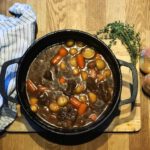
Heerlijke winterse runderstoof
oktober 17, 2020Now that it’s October, you can see that people are starting to make more slow-cooked dishes on weekends. In the summer months, when it’s hot, you often don’t feel like it, but now, as the trees outside are starting to lose their leaves and nighttime temperatures are approaching freezing, it’s time for real delicious slow-cooked dishes. Dishes that personally always remind me of my childhood. Going for a walk during the day and then coming home to warm up with such a delicious stew. I came up with this recipe for an online recipe contest, and the funny thing is that I never really made it again afterward. And that’s despite it being such a tasty stew.
Dutch Oven In the Netherlands, stewing is done best in a Dutch Oven. Cast-iron pans that have been used by many generations before us. In recent years, Dutch ovens have gained popularity in the Netherlands, mainly because they are often used in outdoor cooking and BBQ. However, you’ll find Dutch ovens or regular stewing pans in many kitchens. If you don’t have one yet, it’s highly recommended to have at least one pan at home.
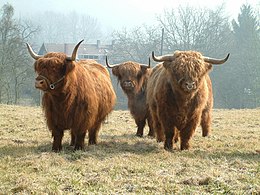
For this dish, I had the luxury of using meat that is not readily available in the Netherlands. I’m talking about beef from Scottish Highland cattle. This breed of cattle is not very common in the Netherlands and are primarily found in the dune areas of Zeeland and South Holland where they graze all year long. They are not originally from the Netherlands. The Dutch local goverments and farmers introduced this cattle to the Dutch Dunes and forest area’s so they can graze all year long due to their thick fur that protects them from the cold in winter. My butcher occasionally sells this meat when he can get his hands on it. I’m fortunate to be able to order a box with various cuts from him. The advantage of this breed is that they are not grain-fed but primarily feed on what grows in the dune area, which you can really taste in terms of flavor and you can see it in the color of the meat. However, this doesn’t mean you can’t make it with all kinds of stewing beef. If you have good quality beef from your local butcher. Than by all means use it!
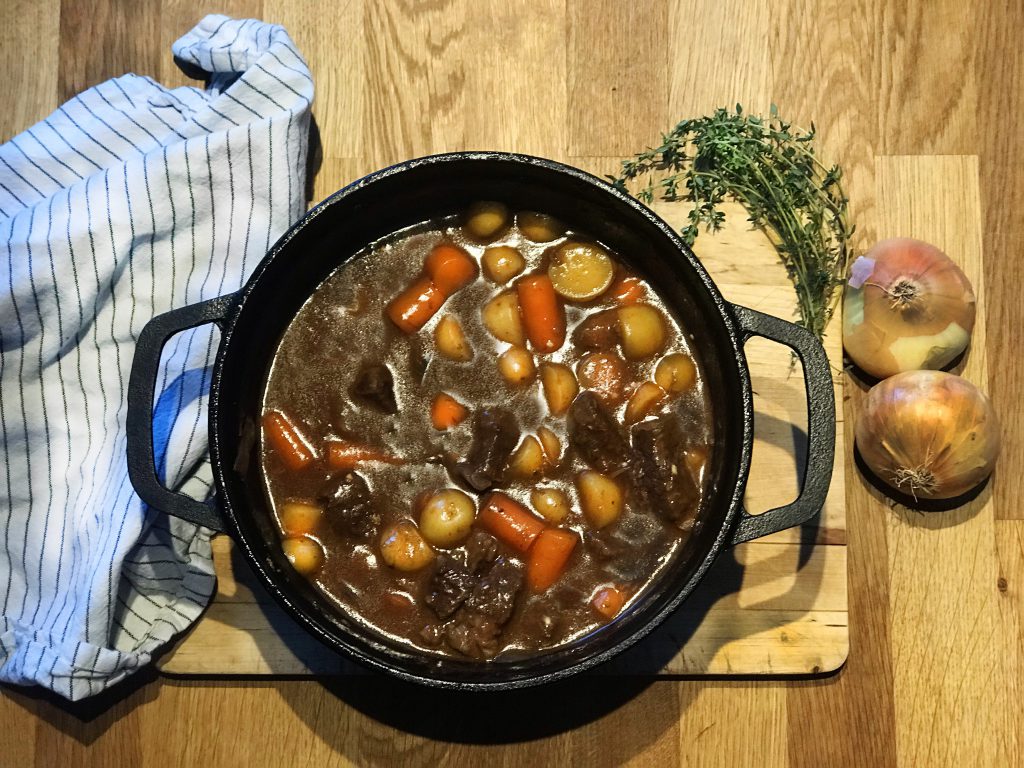
Ingredients
4 pounds of chuck roast or other beef suitable for stewing
Small potatoes with skin on (750 grams)
10 to 12 carrots
1 liter of beef broth
500 ml of dry red wine
70 grams of tomato paste
1 yellow onion
2 bay leaves
4 sprigs of thyme
3 tablespoons of flour
1 teaspoon of pepper
1 + 1/2 teaspoons of sea salt
1 tablespoon of oil
Directions
- Preheat the oven to 160 degrees Celsius. Place the Dutch oven on the stovetop and heat it thoroughly. If you have a BBQ like a kamado or a kettle BBQ with a lid, light it up and maintain the temperature at around 150 to 160 degrees Celsius, preparing it for indirect cooking.
- Place a Dutch oven on the BBQ and let it get hot.
- Cut the potatoes in half, the onions into wedges, and the carrots into pieces. Set aside 1/3 of the carrots for later.
- Coat the chuck roast or beef chunks with flour. Add the oil to the hot Dutch oven and brown the beef on all sides for about 8 minutes.
- Remove the meat from the pan, drain the excess fat, and add all the ingredients except for the 1/3 portion of carrots and the potatoes to the pan. Return the meat to the pan. Put the lid on, and either place it in the oven or on the BBQ. Let the dish stew for 2 hours in the oven.
- After 1 to 1.5 hours, remove the pan from the oven or BBQ. Scoop out as many of the vegetables as possible from the BBQ (tip: try to leave some of the onions in the pan because they add extra flavor). Now add the potatoes and the remaining carrot pieces to the stew. Put the lid back on the pan and return it to the oven or BBQ for another 2 to 2.5 hours.
- Afterward, remove the pan from the oven or BBQ and stir it well. This incredibly delicious stew is now ready to be enjoyed.
Meld je aan voor de nieuwsbrief en ontvang elke week een BBQ recept uit de prive collectie in je mail!


